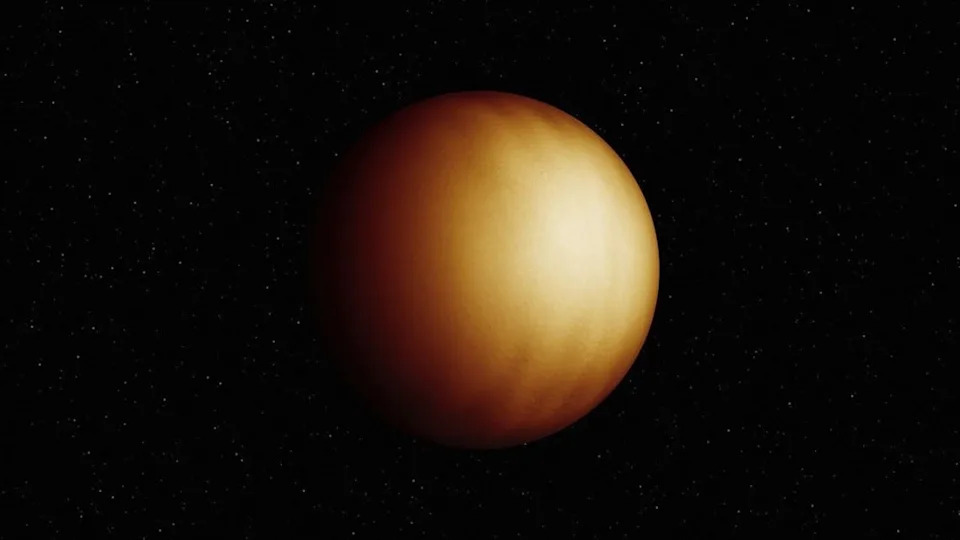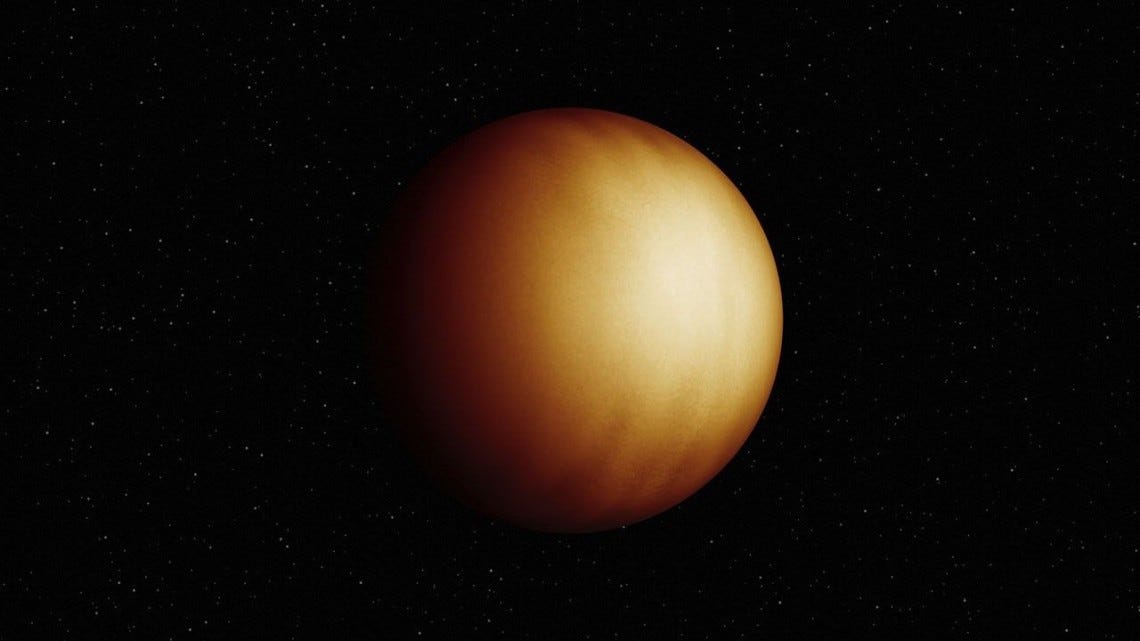A distant gas giant the size of 10 Jupiter planets is now the first planet outside Earth’s solar system to be mapped in three dimension, a team of astronomers says.
Using data from NASA’s James Webb Space Telescope, a group of international researchers were able to piece together a 3D map of an exoplanet known as WASP-18 b. The breakthrough creation marks a major first in planetary science, as a three-dimensional model of a planet orbiting another star beyond our sun had never before existed, the team claimed in a press release.
What’s more, the researchers are hoping their technique can be used to better observe many others of the more than 6,000 exoplanets so far discovered in the cosmos.
Vera C. Rubin Observatory reaches for the stars: Take a look
1 of 11
The multi-colored tracks of asteroids flash on and off in this image of two spiral galaxies within the Virgo Cluster. Each of these tracks represents a moving asteroid detected by NSF–DOE Vera C. Rubin Observatory in its first few nights of observations.
Here’s everything to know about exoplanets, as well as the first 3D map of a planet outside Earth’s solar system.
What are exoplanets?
Exoplanets are planets outside Earth’s solar system. For that reason, these celestial bodies are sometimes also referred to as extrasolar planets.
Some, called rogue planets, don’t even orbit a star, but rather are floating through the cosmos untethered.
In September, NASA recorded a milestone 6,000-plus worlds spotted beyond our solar system, 30 years after the first exoplanet was discovered.
As of Oct. 30, a total of 6,028 exoplanets have been confirmed, according to NASA’s Exoplanet Science Institute, which monitors and tracks exoplanets. What’s more, not only are nearly 8,000 additional exoplanet candidates awaiting official confirmation, but billions are thought to exist, astronomers say.
Astronomers create 1st-ever 3D map of exoplanet
Now, astronomers have managed to bring an exoplanet into unprecedented focus by using a technique the researchers call 3D eclipse mapping. The effort, also referred to as spectroscopic eclipse mapping, builds on a 2D model that members of the same team published in 2023 using observations from the James Webb Space Telescope.
Typically, exoplanets are difficult for scientists to observe from Earth because their host stars are so bright that they outshine them. The new process, the team explained in a press release announcing the research, allows astronomers to image exoplanets directly.

Observations of different wavelengths show different temperatures and altitudes within WASP-18b’s gaseous atmosphere.
The researchers built the map by analyzing in many wavelengths data from the Webb telescope’s near-infrared imager – the type of view that someone would see when using night-vision goggles. Each color in the model corresponds to different temperatures and altitudes within WASP-18 b’s gaseous atmosphere.
What is WASP-18 b?
WASP-18 b, seen in an artist concept, is a gas giant exoplanet 10 times more massive than Jupiter. Scientists produced a 3D map of WASP-18 b, marking a first for a planet outside Earth’s solar system.
Discovered in 2009, WASP-18 b is a gas giant exoplanet that would be comparable to Jupiter in our solar system – except it’s 10 times more massive.
Observations from the James Webb Space Telescope, which launched into the cosmos in 2021, have revealed surface temperatures on the world that reach 5,000 degrees Fahrenheit, according to NASA. Water vapor is also present in the planet’s atmosphere, which the three-dimensional map revealed is constantly broken down by the scorching heat.
Its heat, as well as the fact that it orbits its host star in just 23 hours, made it an ideal candidate to attempt the new 3D mapping technique, the researchers said.
Like Earth’s moon, WASP-18 b has a “dayside” that constantly faces the celestial body it orbits. The new 3D map confirmed that the planet has distinct regions differing in both temperature and chemical composition on WASP-18 b’s star-facing side.
For instance, the planet is home to a circular hotspot where the most powerful starlight hits it, and where wind doesn’t blow strong enough to redistribute the heat. A colder ring surrounds that hotspot near the planet’s outer edge.
Mapping technique could be used on other exoplanets
The breakthrough 3D modeling technique is one the researchers hope will soon be used to unveil details of hundreds of other hot gaseous worlds beyond Earth’s solar system – just as Earth-based telescopes have long already observed Jupiter’s distinct features.
“With this telescope and this new technique, we can start to understand exoplanets along the same lines as our solar system neighbors,” study lead author Ryan Challener, an astronomer at Cornell University, said in a statement. “We can start to understand exoplanets in 3D as a population, which is very exciting.”
The team’s research was published Tuesday, Oct. 28, in the journal Nature Astronomy.
Eric Lagatta is the Space Connect reporter for the USA TODAY Network. Reach him at elagatta@gannett.com
This article originally appeared on USA TODAY: 1st-ever 3D map of exoplanet brings distant world to life. Take a look

